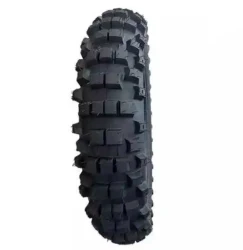Overview of Motorcycle Wheels and Tires
2023-12-04
Motorcycle wheels and tires are crucial components that directly impact a bike's performance, handling, and overall safety. Here's an overview of these components:
1. Wheels:
- Rims: Rims are the outer circular components of the wheel that hold the tire. They can be made of various materials, such as aluminum or steel.
- Spokes: Many traditional motorcycle wheels have spokes that connect the rim to the hub. Spoked wheels are common in off-road and classic-style motorcycles.
- Cast Wheels: Modern motorcycles often feature cast wheels, where the entire wheel is formed from a single piece of metal. Cast wheels are generally lighter than spoked wheels and require less maintenance.
2. Tires:
- Tire Types: Different types of tires are designed for various riding conditions and styles. Common types include:
- Sport Tires: Designed for high-performance bikes and offer excellent grip for sport riding.
- Touring Tires: Provide a balance of performance and durability for long-distance touring.
- Cruiser Tires: Often have a wider profile and are designed for cruising and relaxed riding.
- Off-Road Tires: Built for dirt and off-road use, with aggressive tread patterns for traction on various surfaces.
- Dual-Sport Tires: Designed for both on-road and off-road use, providing a compromise between street and off-road performance.
- Tire Size: Motorcycle tires come in different sizes denoted by a combination of numbers on the sidewall, indicating the tire's width, aspect ratio, and diameter.
- Tread Pattern: The tread pattern on the tire influences traction and performance. Street tires typically have a smoother tread for better grip on pavement, while off-road tires have more aggressive patterns for traction on loose surfaces.
- Tubeless Tires: Some motorcycles use tubeless tires that don't require an inner tube. Tubeless tires can be more resistant to punctures and provide easier repair options.
3. Balancing and Maintenance:
- Wheel Balancing: Proper wheel balancing is crucial for smooth and stable riding. Imbalanced wheels can lead to vibrations and uneven tire wear.
- Tire Pressure: Maintaining the correct tire pressure is essential for safety and optimal performance. Incorrect tire pressure can affect handling, traction, and fuel efficiency.
- Tire Wear: Regularly inspecting tire tread depth and wear patterns is important. Worn-out tires can compromise grip and safety.
4. Wheels and Suspension:
- Wheel Alignment: Proper wheel alignment ensures that the wheels are in the correct position, contributing to stable handling.
- Suspension Setup: The condition and setup of the suspension, including the front forks and rear shock absorbers, also influence how the motorcycle interacts with the road.
Understanding the characteristics of different types of wheels and tires, along with proper maintenance, is crucial for ensuring a motorcycle's safety and performance. Riders should follow the manufacturer's recommendations for tire pressure, inspect tires regularly, and replace them when signs of wear or damage are evident. Additionally, selecting the right type of tire for the intended use of the motorcycle can significantly enhance the riding experience.



